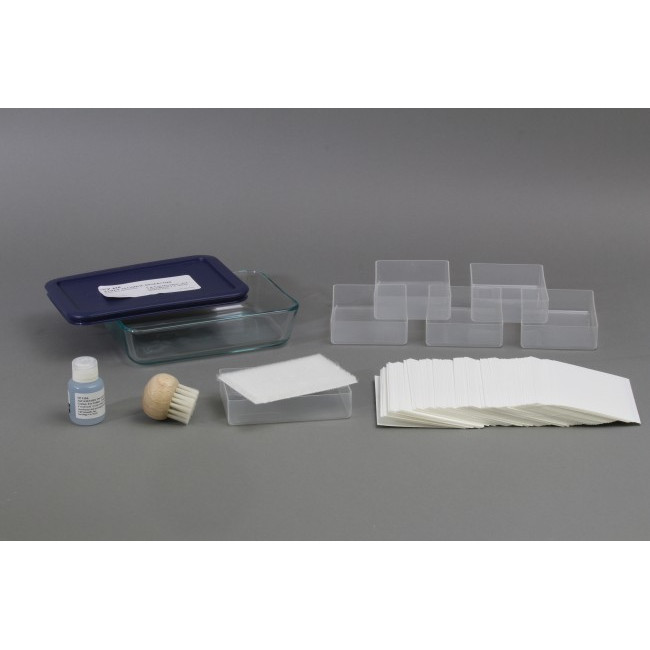To maintain lower CV's and care for your pin tools, we recommend the VP PT-M-Cleaning kit. This kit comes with everything you need to clean and maintain your pin tool. Most problems with liquid transfers that we come across is an inadequate cleaning process. This kit includes reservoirs for your DMSO, Bleach, Water and Alcohol baths. There are 2 common setups for cleaning your pins, and they are determined by the compounds you are transfering.
Before each day's Pin Tool Use, it is recommneded that the pins be cleaned with VP 110A Pin Cleaning Solution, which i sdesigned to clean stainless steel and condition the pins. If hte pins should be coated with organic material, they can be mechanically cleaned with the VP 425 brush and a detergent. If you have access to an ultrasonic bath, we recommend using MICRO 90 from Cole Parmer, at a 1/100 dilution in the ultrasonic bath. If you use an ultrasonic bath, hold hte replicator in hte bath without letting the pins touch the bottom of the reservoi. It is not necessary to clean the replicators in an ultrasonic cleaner if you clean the pins with bleach and brush with detergent after each days's use.
Step-By-Step Transfer and Wash Process
DO's and DON'T's of Pin Tool Care
1. Distilled water is recommended. Use of Deionized water will cause corrosion and damage to the stainless steel pins.
2. Do not soak in bleach solutions for a long period of time as they can corrode the stainless steel pins.
3. Do not heat the pins directly in the Bunsen Burner flame.






